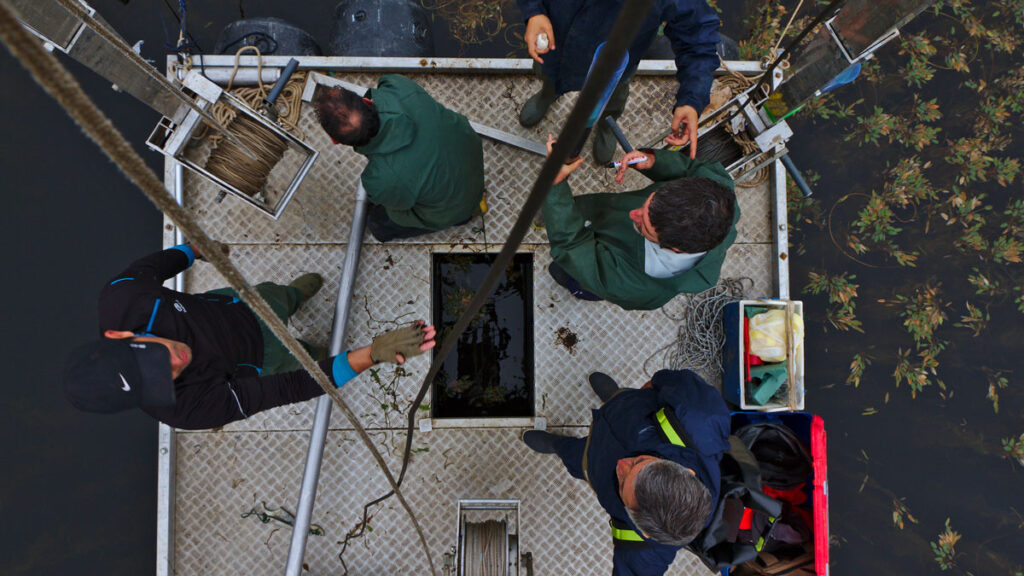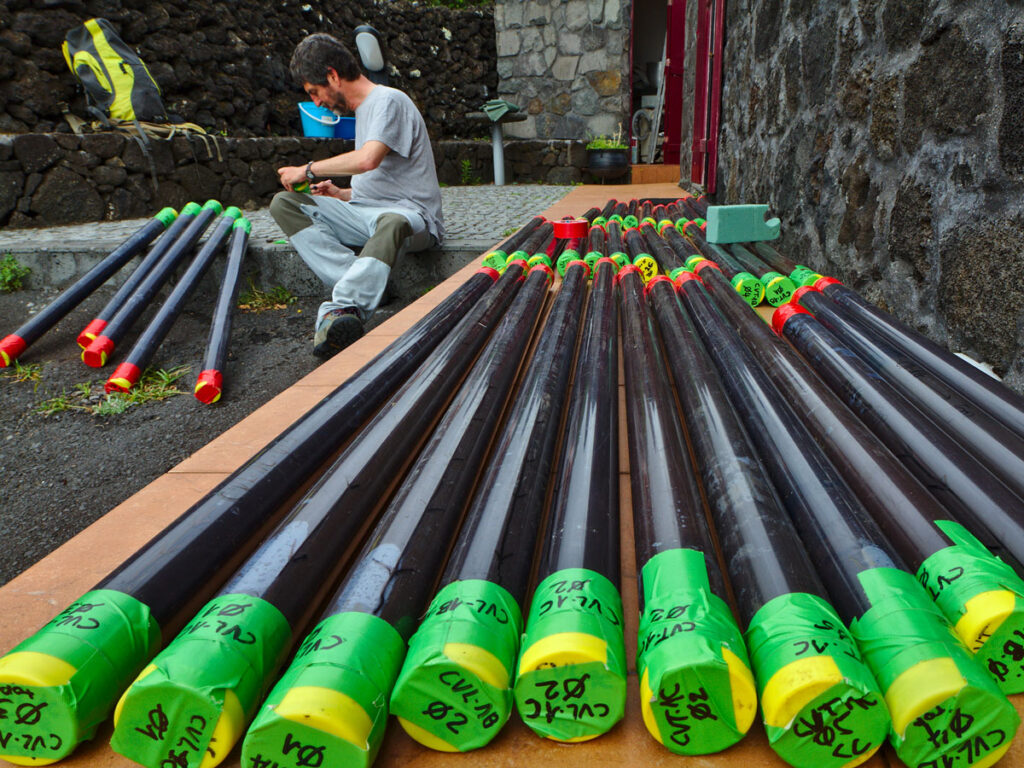Historic documents claim that the Azores, an archipelago of nine islands in the Atlantic Ocean located 1,368 kilometers from the coast of Portugal, were discovered in the 15th century by Portuguese sailors. In his book As Saudades da Terra, written more than 100 years later, Gaspar Frutuoso pinpointed two possible discovery dates (one in 1427 and another, more likely, in 1432) and reported that the sailors were met by untouched nature and pristine ecosystems.
However, this “is not what the sediments are saying,” said Santiago Giralt, a researcher at Geosciences Barcelona and the Spanish National Research Council. Giralt is a member of a team disputing the official narrative in a recently published study in the Proceedings of the National Academy of Sciences of the United States of America.
The researchers were not initially interested in studying the history of the Azores so much as their future. “Our main goal” over the course of 11 years of research, Giralt said, “was to characterize the North Atlantic Oscillation, to see how precipitation might change in the islands in the future.” When they found evidence of pre-Portuguese settlements, the team members were so surprised that they thought the discovery might be evidence of contamination in their samples. After more samples provided the same results, however, a new project was established with the aim of answering the question of when humans first arrived on the islands.
A Multidisciplinary Approach

The team used a 5- × 5-meter raft to take sediment samples from five lakes on the islands of São Miguel, Pico, Flores, Corvo, and Terceira. The samples were sent to Barcelona, where they were cut into small 4- to 5-centimeter sections that were distributed to different members of the team, so they could be analyzed from different scientific perspectives. (The team included geologists, physicists, biologists, limnologists, microbiologists, and chemists.)
Such a multidisciplinary approach provides “a broader view of what really happened in the past.… It can give you unexpected answers,” said Pedro Miguel Raposeiro, a researcher from Centro de Ivestigação em Biodiversidade e Recursos Genéticos in Fornelo e Vairão, Portugal, and a coauthor of the study.
For Giralt, the samples are like “a book written in many different languages,” with each member of the team being an expert in one of the languages. When they get together to share results, team members can “read the whole book” and more holistically describe the history of climate in the Azores.
Lake Sediments and Climate Models
The team used a diverse set of lake and landscape proxy indicators in the course of its research. Pollen indicators, for instance, showed that the islands were mostly dense forests before humans arrived.
“These indicators show human presence 700 years before the Portuguese arrived.”
Around 700 CE, the sediments show an increase in sterols and coprostanols, organic compounds that serve as bioindicators of fecal matter from livestock and humans. Variations in pollen, plant fossils, charcoal particles, and polycyclic aromatic hydrocarbons (chemical compounds produced when wood is burned) suggest accelerated fire activity, deforestation, and soil erosion between 700 and 1070.
Around 1100, the team found pollen from Secale cereale (rye) and Plantago major (broadleaf plantain), plants that are not native to the Azores. To researchers, the presence of these plants is evidence of agriculture. “These indicators show human presence 700 years before the Portuguese arrived,” said Raposeiro. In addition, they “did not find pristine ecosystems,” he continued, “but a landscape that had been…modified for centuries.”

In addition to sediment cores, the team members examined data from several climate models simulating the millennium between 850 and 1850. They found that around the time of the earliest suspected settlement period, there were warmer-than-average conditions in the North Atlantic and enhanced winds from the northeast—not advantageous for explorers from southern Europe. If at that time “you tried to sail from Lisbon to the Azores Islands,” Giralt explained, “with these winds you would miss them and go south.”
By the time the Portuguese arrived in the Azores in the 15th century, Giralt said, wind patterns (as well as maps, navigational technology, and the political climate of the early European Age of Exploration) had changed to their benefit.
Unanswered Questions of History
Wind patterns that may have discouraged southern European explorers would actually have benefited those sailing from Scandinavia.
Vikings were most likely the first to arrive in the Azores, this study suggests. The wind patterns that may have discouraged southern European explorers would actually have benefited those sailing from Scandinavia, and the Vikings were remarkable sailors, traveling at the same time to Iceland, Greenland, and North America.
In addition to proxy evidence, there is also genetic evidence of Norse sailors in the Azores. In 2014, a Portuguese-British team sequenced the DNA of house mice from the Azores, Canary, and Madeira archipelagoes. Although most of the mice genes corresponded to the house mouse of the Iberian Peninsula, some genes were associated with mice from northern Europe. This genetic evidence suggests that the mice may have arrived as accidental stowaways with the Vikings.
For archaeologist and professor Søren Sindbæk of Aarhus University in Denmark, the results from the Azores are surprising but feasible. “There are many modern myths about the Vikings/Norse,” he said. “One of the enduring and well-founded parts of their legacy is seafaring.”
Sindbæk thinks that if the Azores settlement is confirmed, it would be an impressive example of Viking nautical skills. However, he is cautious and thinks other seafaring groups such as Irish monks, who also reached Iceland during medieval times, can’t be discounted. According to Sindbæk, “maritime explorations were keenly remembered in Norse society,” and the voyages to the Azores are not featured in written sources or sagas.
Many more questions remain unanswered. At least five maps and an atlas that show the archipelago were written in continental Europe during the 14th century. How did the authors learn about the islands and their location?
If Vikings did settle the islands, where are their graveyards or settlements? Did Portuguese explorers meet them when they arrived on the islands? And if they did, why did they not leave any record of it?
“We want to talk with archaeologists and historians,” said Giralt.
—Santiago Flórez (@rflorezsantiago), Science Writer

